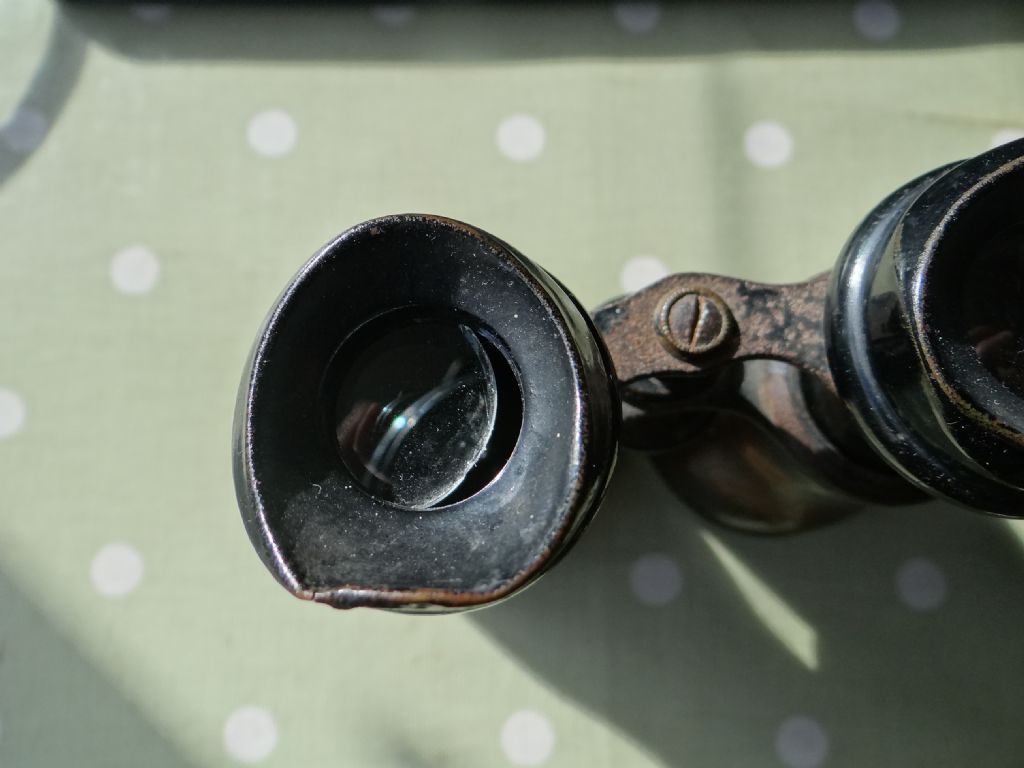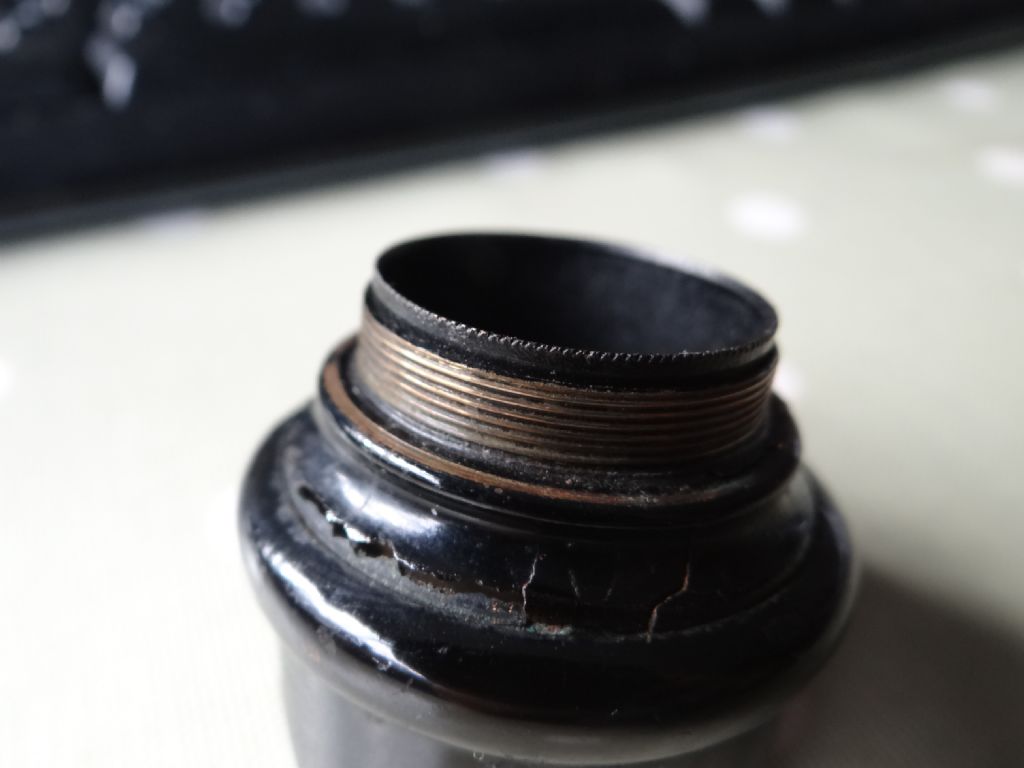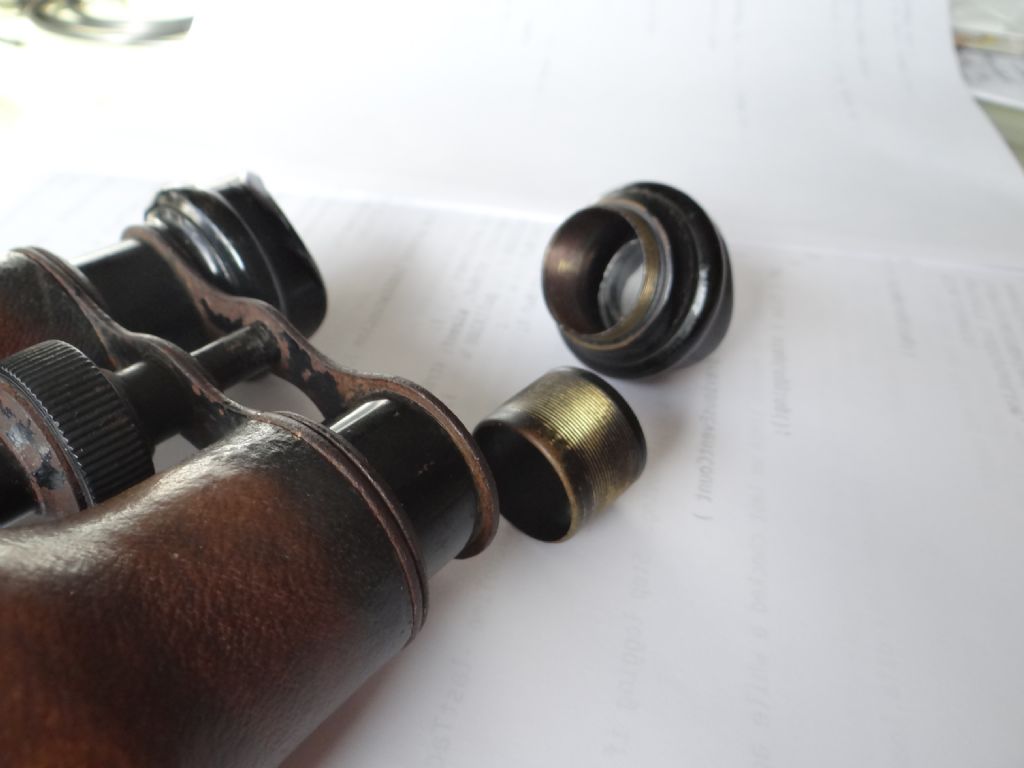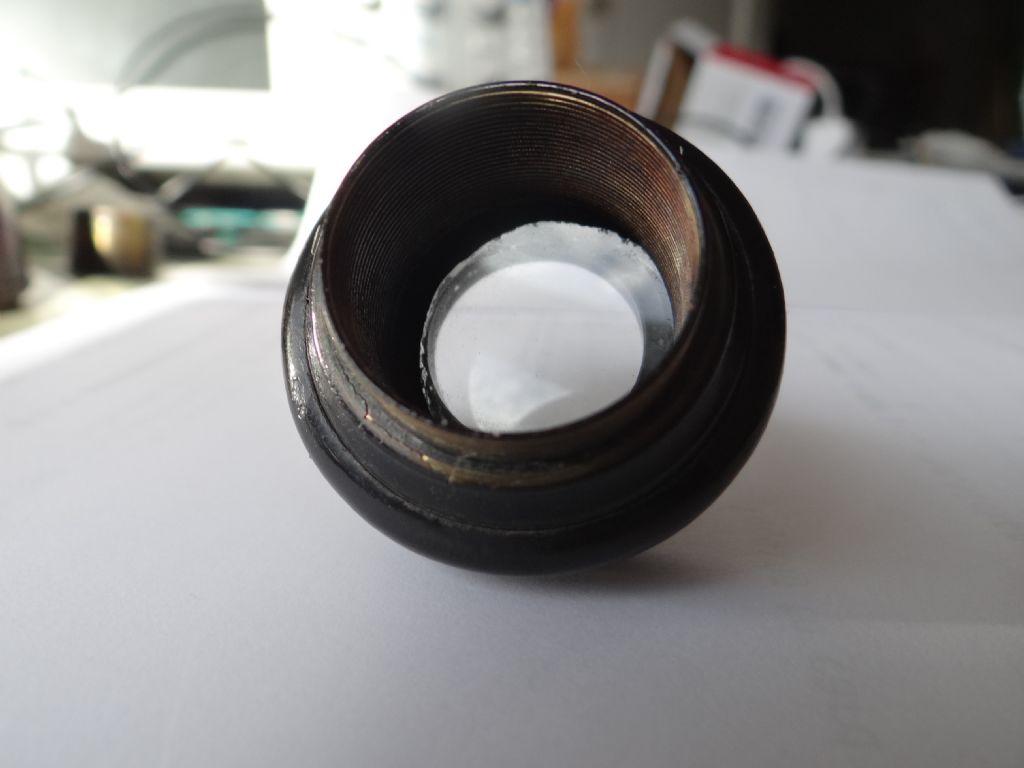Hi, Dave,
When I renovated my OGs, i managed to drop the eyepiece lens when I unscrewed the rim, and it was a right b****r to find it again! Your suggestion of Canadian Balsam just about mirrors what I did.
If yours are like mine, the actual 'eyehole' is somewhat smaller than the lens, so in effect it is sitting on quite a wide seat. I simply cleaned up the seat, positioned the rim so it was horizontal, and sat the lens in place. I then used a sharp pointed toothpick to place a couple of tiny blobs of Evostik (impact adhesive) at the edge of the lens, so it was secured inside the eyepiece 'cylinder'. When the glue was dry, I screwed in the retaining cylinder (the bit you have had problems with), and it worked fine.
I used this as opposed to something like shellac because I didn't want the glue to spread around the lens, and fix it permanently, or get onto the lens itself. Very small drops (hence the toothpick) are easy to remove.
Incidentally, the rim of my lenses were not smooth – they have quite a rough finish, with small chips around the edges – they don't matter because they are masked by the eyepiece rim.
The lens doesn't seem to require any 'alignment' as such. There doesn't appear to be any way to adjust it anyway, and there certainly wasn't multiple lenses or packing pieces – these were sold as a relatively cheap pair of opera glasses – simply clean the seat, bung the lens in and screw down the locking tube. It didn't make any visible difference then or now which way around it went – it looked like a symmetrical concave lens.
Edited By An Other on 07/03/2018 15:01:31
SillyOldDuffer.









